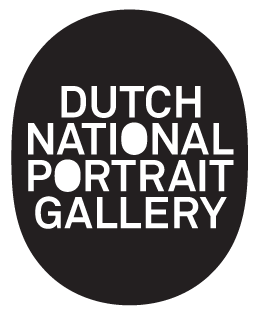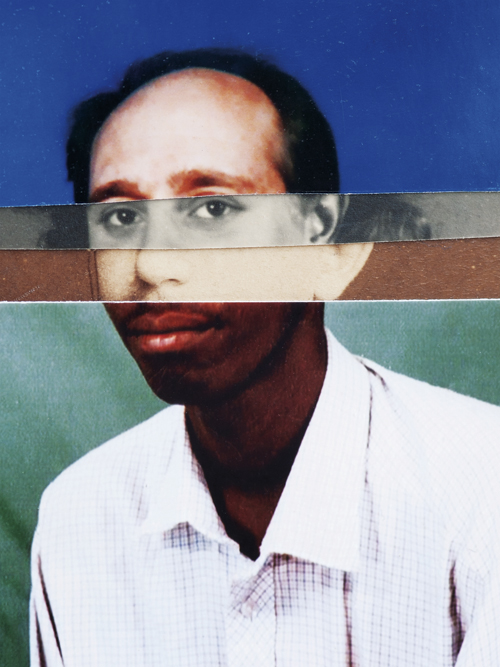
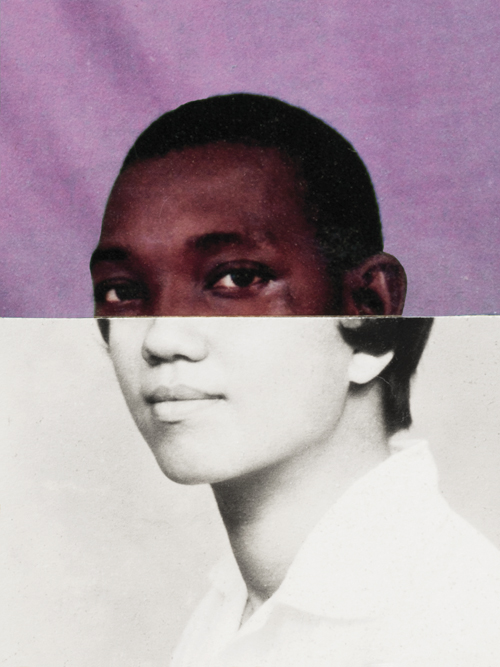
Bonnita Postma (1959) maakt collages met gevonden portretfoto’s uit verschillende tijdvakken en fotografeert deze. Door met de collagetechniek toe te voegen, weg te laten, te bedekken en te ontdekken ontstaan nieuwe portretten en persoonlijkheden. Identiteit is niet langer gebonden aan stereotypen als geslacht, kleur of leeftijd.
Bonnita Postma (1959) makes collages with found portraits from different eras and subsequently photographs them. By adding, subtracting, covering and discovering with the collage technique, new portraits and personalities emerge. Identity is no longer tied to stereotypes such as gender, skin colour or age.
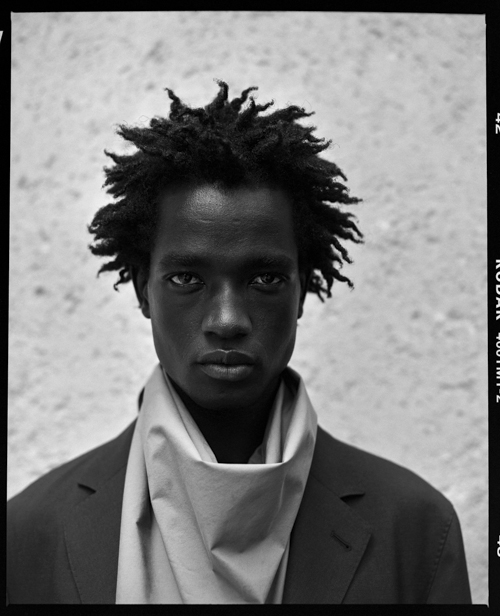
Bart Koetsier (1975) is een Nederlandse portret- en documentaire- en straatfotograaf gevestigd in Parijs. In zijn beelden creëert hij een sterke filmische sfeer. Het gebruik van licht is bepalend; gebeurtenissen worden scènes, mensen worden personages en de locaties worden hun decor. Koetsier werkt al jaren aan zijn nachtelijke serie Taillights Fade, een persoonlijk document over Europese steden als Amsterdam, Parijs, Brussel, Marseille en Warschau aan het begin van de 21e eeuw.
Bart Koetsier (1975) is a Dutch portrait, documentary and street photographer based in Paris. He creates a strong cinematic atmosphere in his images. The use of light is decisive; events become scenes, people become characters and the locations become their scenery. During many years Koetsier has been working on his nocturnal series Taillights Fade, a personal document on European cities such as Amsterdam, Paris, Brussels, Marseille and Warsaw, at the beginning of the 21st Century.
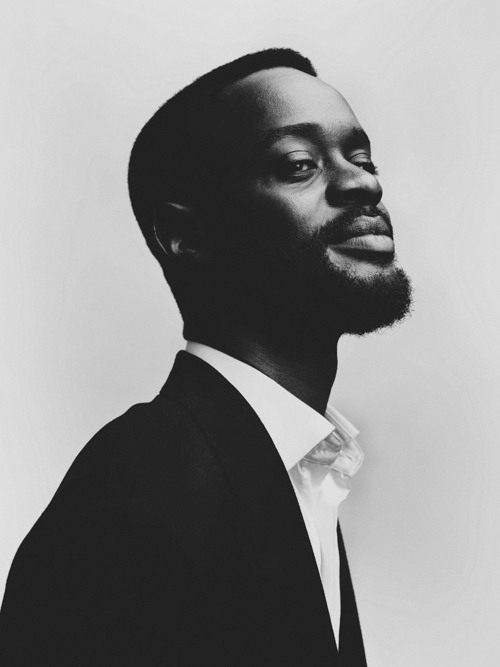
Bastiaan Woudt (1987) is autodidact en begon zijn carrière tien jaar geleden door te experimenteren met moderne technieken en te kijken naar boeken van Irving Penn en Richard Avedon. Geïnspireerd door fotografie uit de jaren 50, 60 en 70 won Woudt al snel internationale prijzen en werd zijn werk tentoongesteld in galeries. Gunifort Uwambaga verslond boeken om te ontsnappen aan zijn verleden als vluchteling. Hij is nu uitgever en mede-eigenaar van boekhandel Mendo in Hotel De l’Europe.
Bastiaan Woudt (1987) is a self-taught photographer who started his career ten years ago by experimenting with modern techniques and by looking at books by Irving Penn and Richard Avedon. Inspired by 50s, 60s and 70s photography, Woudt soon won international awards and his work was showcased in galleries. Gunifort Uwambaga devoured books to escape his past as a refugee. He is now publisher and co-owner of the Mendo bookshop at Hotel De l’Europe.
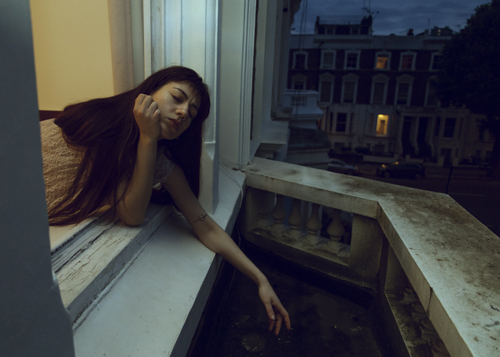
Christine Mooijer (1990) is een Amsterdamse fotografe die zich toelegt op (geënsceneerde) portretfotografie. Hollywood en de popcultuur beïnvloeden een belangrijk deel van haar werk. Ze was altijd aangetrokken tot tv-shows, films en entertainment, met name verhalen rond vrouwelijke hoofdrolspelers, waarmee ze iets van de Hollywood-spirit in haar werk brengt zonder haar Nederlandse roots uit het oog te verliezen. Haar fictieve, filmisch gestileerde verhalen weerspiegelen een combinatie van deze zeer verschillende werelden.
Christine Mooijer (1990) is an Amsterdam based photographer focusing on (staged) portrait photography. She has been influenced by Hollywood and pop culture, which is a big part of her imagery. Having always been drawn to TV shows, movies and entertainment, especially stories built around female leads, she brings some of the Hollywood spirit into her art, without losing sight of her Dutch roots. Her cinematically styled fictional stories reflect a combination of these two very different worlds.
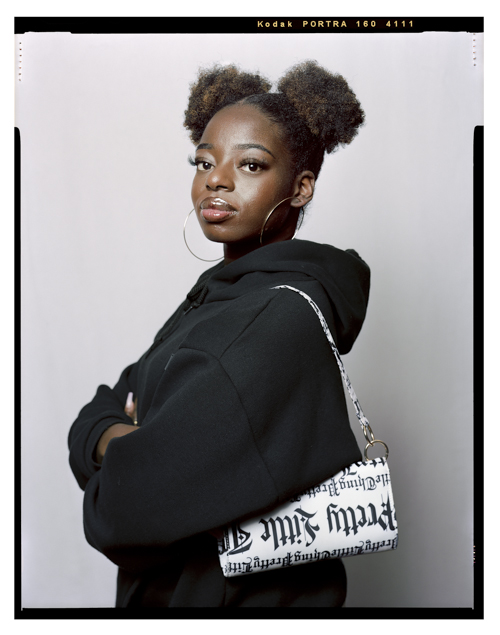
from the series Studio Trompettersteeg, 2021
Eva Roefs (1993) fotografeerde Maxi – vernoemd naar koningin Máxima- in haar studio bij de Trompettersteeg. Maxi is een creatieve jonge vrouw die op dat moment bij een plaatselijke supermarkt werkt. Zes maanden lang zocht Roefs haar modellen rondom het smalste steegje van Amsterdam. Met een analoge 4×5 inch camera legde ze tijdens de pandemie in alle rust haar buurtgenoten vast; maar liefst 70 portretten van mensen die wonen en werken op de Wallen, resulterend in het boek Studio Trompettersteeg (2021).
Eva Roefs (1993) photographed Maxi – named after Queen Máxima – in her studio at the Trompettersteeg. Maxi is a creative young woman who currently works at a local supermarket. For six months, Roefs found her models around the narrowest alley in Amsterdam. With an analog 4×5 inch camera she captured her neighbours during the pandemic: no less than 70 portraits of people who live and work in the Red Light District, resulting in the book Studio Trompettersteeg (2021).

Frank Ruiter (1978): ‘De RVD belde, of ik Prinses Amalia (18) wilde fotograferen ter ere van haar 18e verjaardag. Dat leek me een bijzonder goed idee. Een uit de klei getrokken Groningse dorpsbewoner die gevraagd werd de toekomstige Vorstin van Nederland te portretteren. Hoe eervol. En ze wilden graag dat ik zou werken zoals ik altijd doe, dus met spannend gericht natuurlijk licht, zonder al te veel poespas. Het resultaat is een sfeervol, waardig en krachtig portret.’
Frank Ruiter (b.1978): ‘The RVD called: did I want to photograph Princess Amalia (18) in honour of her 18th birthday? A very good idea indeed. A villager from Groningen who is asked to portray the future Queen of the Netherlands. How honorable. They wanted me to work the way I always do, with dramatic focused natural light, without too much frills. The result is an atmospheric, dignified and powerful portrait.’

Frank Ruiter (1978) houdt ervan mensen te ontmoeten, naar hun verhalen te luisteren en ze terloops te fotograferen. ‘Toen ik hoorde dat ik Herman van Veen (77) mocht fotograferen sprong ik in de lucht. Ik ben fan. ‘Cirkels’ en ‘ik hou van jou’ horen bij mijn favoriete Nederlandstalige liedjes. Hij heeft een mysterieuze blik en iets ongrijpbaars. Die blik, die prachtige ogen, heb ik getracht op een zo puur mogelijke manier te vangen en te benadrukken met zeer gericht daglicht’.
Frank Ruiter (1978) enjoys meeting many different people, listening to their stories and casually photographing them. Ruiter: ‘When I heard that I could photograph Herman van Veen (77) I jumped for joy. I’m a fan. ‘Circles’ and ‘I love you’ are at the top of my favourite Dutch songs. He has a mysterious look and also something elusive. I tried to capture and emphasize that look, those beautiful eyes, in the purest possible way with very focused daylight’.

Milan Gies (1977) is gefascineerd door ‘het verhalende lichaam’, de manier waarop pijn zijn sporen nalaat. Dit portret maakt deel uit van de serie Compositie, gemaakt voor de tentoonstelling Rauw in Museum het Rembrandthuis. Gies richt zich op de fysieke en mentale sporen die het leven op het lichaam achterlaat. In hoeverre beïnvloeden traumatische ervaringen de manier waarop iemand kijkt of beweegt. Voor Compositie heeft hij een langdurige relatie opgebouwd met dakloze mannen rondom Amsterdam.
Milan Gies (1977) is fascinated by ‘the narrative body’, the way in which pain leaves its mark. This portrait is part of the series Composition, made for the exhibition Rauw in Museum het Rembrandthuis. Gies focuses on the physical and mental traces that life leaves behind on the body. To what extent do traumatic experiences affect the way someone looks or moves. For Compositie, he has built a long-term relationship with homeless men around Amsterdam.

Muhcine Ennou (1991) is geboren in Marokko en woont en werkt nu in Amsterdam. Zijn werk was te zien in groepstentoonstellingen bij het Stedelijk Museum Schiedam (imaginary landscapes in Bit by Bit, 2022), Nederlands Fotomuseum Rootterdam (2022 en 2020) en in Melkweg Expo (2019).
Muhcine Ennou (1991) is a Moroccan-born photographer, currently based in Amsterdam. His work has been showcased in group exhibitions at Stedelijk Museum Schiedam (imaginary landscapes in Bit by Bit, 2022), Nederlands Fotomuseum Rootterdam (2022 en 2020), and in Melkweg Expo (2019).
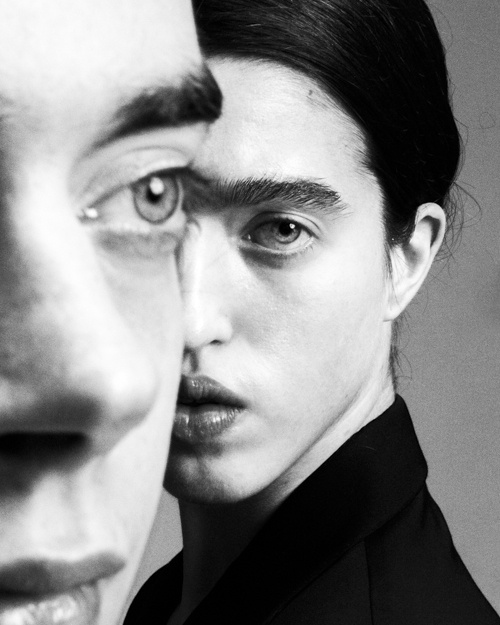
Perspective, 2022
Nanda Hagenaars (b.1988) is een Amsterdamse fotograaf en kunstenaar. Ze maakt altijd enkelvoudige portretten, maar in dit geval wilde ze proberen haar perspectief te veranderen. Haar benadering om naar de geportretteerde te kijken, is door het portret als een kleine puzzel te beschouwen. Ze knijpt haar ogen samen om de perfecte compositie te vinden. ‘In mijn portretten is er ruimte voor emoties en kwetsbaarheid, en een vleugje rauwheid.’
Nanda Hagenaars (b.1988) is an Amsterdam based photographer and artist. She always makes single portraits, but in this case she felt she needed to try and shift her perspective. Her approach to find a new way to look at the sitter is to view the portrait like a little puzzle. Always squeezing her eyes to find the perfect composition. ‘In my portraits, there is space for emotions and vulnerability and a dash of rawness.’

Nanda Hagenaars ontmoette Tzvika in een restaurant. Ze was door hem geïntrigeerd vanwege zijn mooie uiterlijk, vooral zijn neus. Ze nodigde hem uit om naar haar studio te komen en hij accepteerde de uitnodiging. Ze maakte dit portret van hem met haar oude Rolleiflex-camera. Hagenaars: ‘Het was de perfecte setting. Simpel en eerlijk, en zonder haast.’
Nanda Hagenaars met Tzvika in a restaurant. He intrigued her. His beautiful appearance, especially his nose. She invited him to come to her studio, and he accepted the invitation. She shot this portrait with her old Rolleiflex camera. Hagenaars: ‘This was the perfect setting. Simple and honest, and without any rush.’

In 2014 startte Prins de Vos de serie Boys Do Cry, met deze foto van Levi rondde hij de serie af in 2021. Het onderwerp is mannelijke kwetsbaarheid via het verhaal van Levi, die kunstenaar, dichter en trans man is. Door (naakte) lichamen te tonen wil De Vos het taboe, het sensationele aspect en de nieuwsgierigheid rondom de anatomie van trans personen laten afnemen en bijdragen aan de emancipatie van trans personen.
In 2014, Prins de Vos started working on the series Boys Do Cry, and with this portrait of Levi he completed the series in 2021. It is about male vulnerability and the story of Levi, who is an artist, poet and trans man. By showing (naked) bodies, De Vos wants to reduce the taboo, the sensational aspect and curiosity surrounding the anatomy of trans people. The photographer also wants to contribute to the emancipation of trans people.

Robin de Puy (1986) won al eerder de Rabo Photographic Portrait Prize. Op deze foto is Savannah (18) zwanger van Vivian, haar eerste dochtertje. Ze woont op dat moment in een motelkamer, samen met haar vader, haar twee broers en zussen, twee honden en een hagedis. Het portret is onderdeel van de serie The Receptionist, die De Puy maakte tijdens een rondreis door de Verenigde Staten.
Robin de Puy (1986) is a previous winner of the Rabo Photographic Portrait Prize. In this photo, Savannah (18) is pregnant with Vivian, her first daughter. She currently lives in a motel room with her father, her two siblings, two dogs and a lizard. The portrait is part of the series The Receptionist, which De Puy made while touring the USA.
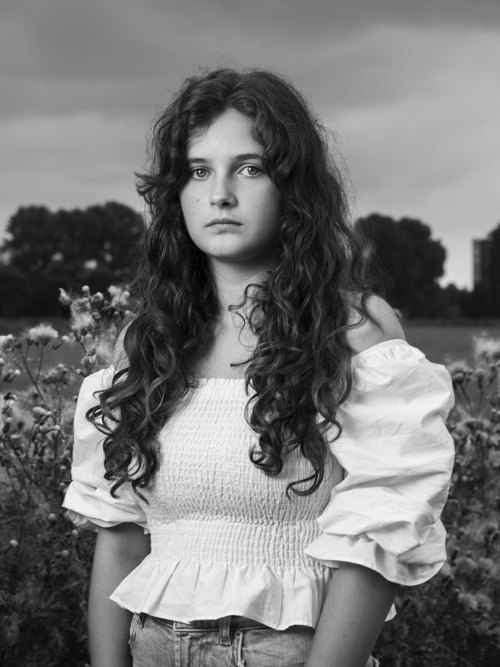
Robin de Puy (1986) woont al enkele jaren in Wormer, een klein dorp omgeven door water, net ten noorden van Amsterdam. Gefascineerd door het Amerikaanse platteland, ontdekte De Puy tijdens de lockdown dat haar woonomgeving vrij universeel blijkt te zijn, met dezelfde soort lokale iconen van kleine steden die ze vaak tegenkwam tijdens haar reizen door de landelijke landschappen van Amerika. ‘Alyssa’ is een van de portretten die ze dichtbij huis maakte.
Robin de Puy (b.1986) has lived in Wormer for several years. It’s a small village surrounded by water just to the north of Amsterdam. Fascinated by the American countryside, De Puy discovered during the lockdown that her own environment proves to be quite universal, with the same sort of local small-town icons that she has often encountered during her travels through the rural landscapes of America. ‘Alyssa’ is one of the portraits she took close to home.
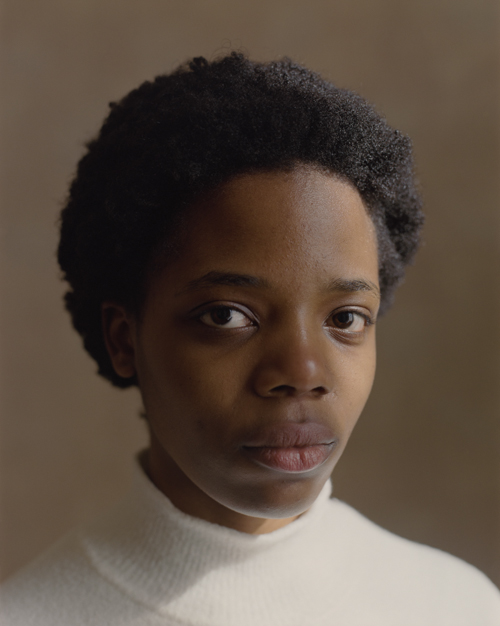
Wouter le Duc (1989) portretteerde schrijfster Daniëlle Zawadi (1999) in landhuis Oud-Amelisweerd in Bunnik. Zawadi volgde een talentontwikkelingsprogramma voor jonge schrijvers: Slow Writing Lab. Le Duc: ‘In mijn ontwikkeling als fotograaf zijn er altijd specifieke portretten geweest die een volgende stap markeren – dit is er een van. Met Daniëlle had ik een natuurlijk klik en tijdens het maken van dit portret voelde ik de ruimte en mogelijkheid om een volgende stap te zetten qua lichtgebruik’.
Wouter le Duc (1989) portrayed writer Daniëlle Zawadi (1999) in the Oud-Amelisweerd country house in Bunnik. Zawadi attended a talent development program for young writers: Slow Writing Lab. Le Duc: ‘In my development as a photographer there have always been specific portraits that mark a next step – this is one of them. I had a natural click with Daniëlle and while making this portrait I felt the space and opportunity to take the next step in terms of use of light’.

Carla Kogelman (1961) studeerde af aan de Foto Academie Amsterdam (2011), legt het dagelijkse leven van mensen vast en fotografeert achter de schermen van theater, film en sport. Ze won World Press Photo-prijzen in 2014 en 2018, meerdere Silver Camera-prijzen en tweemaal de Alfred Fried Photography Award. Casey (21, hij/hem) studeert ICT aan Fontys Eindhoven. Transgenders krijgen vaak ongepaste en irrelevatne vragen. ‘Wat er in mijn broek zit doet er niet toe. Ik ben wie ik ben.’
Carla Kogelman (b.1961) graduated from Foto Academie Amsterdam (2011), captures the daily life of people and photographs behind the scenes of theatre, film and sports. She won World Press Photo prizes in 2014 and 2018, multiple Silver Camera prizes, and the Alfred Fried Photography Award twice. Casey (21, he/him) studies ICT at Fontys Eindhoven. Transgender individuals are often asked inappropriate and irrelevant questions. “What’s in my pants doesn’t matter. I am who I am.’
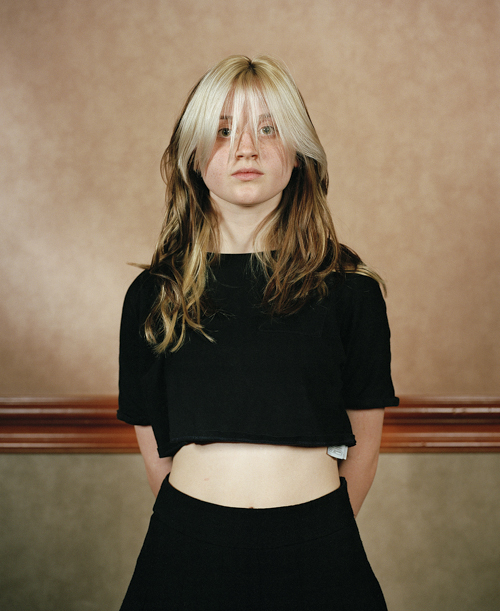
Hajar Benjida (1995) is Marokkaans-Nederlands en afgestudeerd aan de HKU (2019). Met een documentaire en intieme benadering fotografeert ze enkele van de grootste namen in hiphop van vandaag maar ook de stripclubscene in Atlanta en de impact ervan op de muziekindustrie. Benjida’s debuuttentoonstelling was op Art Basel op Scope Art Fair Miami 2018 met ‘Young Thug as Paintings’. ‘Atlanta Made Us Famous’ is door Unseen geselecteerd als bijzonder afstudeerproject van 2019 en is onderdeel van Foam Talent 2021.
Hajar Benjida (b.1995) is Moroccan-Dutch and a HKU graduate (2019). She has a documentary and intimate approach in photographing some of today’s biggest names in hip-hop to capturing the strip club scene in Atlanta and its impact on the music industry. Benjida’s debut exhibition was at Art Basel at Scope Art Fair Miami 2018 with ‘Young Thug as Paintings’. ‘Atlanta Made Us Famous’ was selected by Unseen as an outstanding graduation project of 2019 and is part of Foam Talent 2021.
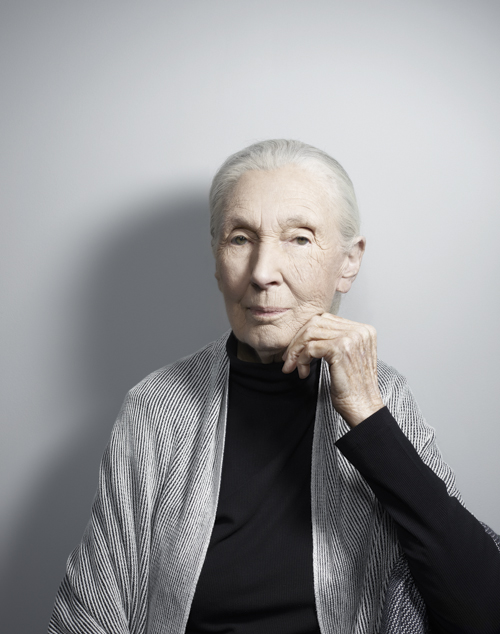
Jouk Oosterhof (1973): ‘Toen ik kind was, was Jane Goodall al mijn held. ‘I prefer to go to the dentist’ zei ze voordat ze m’n hand schudde. Deze ongelofelijke vrouw – UN messenger of peace – vecht als 88-jarige nog altijd voor een betere wereld.’ ‘Tijdens de shoot komt alles samen. Er moet niet alleen een moment van connectie met de geportretteerde zijn. Een foto moet op álle vlakken aandacht krijgen. Compositorisch, esthetisch en technisch.’
Jouk Oosterhof (1973): ‘Jane Goodall was my childhood hero. “I prefer to go to the dentist,” she said before shaking my hand. This incredible woman – UN messenger of peace – is still fighting for a better world at the age of 88.’ ‘Everything comes together during the shoot. A moment of connection with the sitter is not the only thing required. A photo should get compositional, aesthetic as well as technical attention.’
